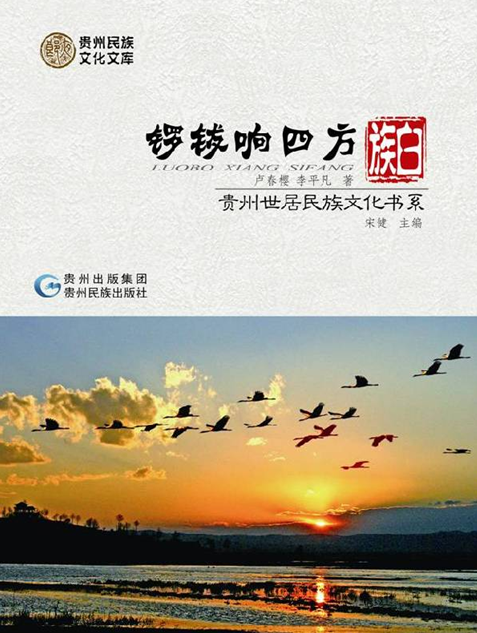
The Guizhou plateau, as an ecological kingdom enjoying rich ethnic culture, is located in the heart of Southwest China. What kind of culture can nurture stretching mountains, clear rivers, green forests, deep canyons, as well as melodious folk songs and splendid costumes of different peoples?
The province has 600 years of history and covers an area of 176,000 square kilometers. There are 18 native peoples living in this ecological place. Where are they from? How did they and their descendents live with the surrounding environment peacefully? What kind of lifestyle and ethnic flavor do they have that enriches the world?
Guizhou Publishing Group published the Native Ethnic Culture Series by organizing ethnic culture experts and elites of the province to deeply excavate ethnic culture in Guizhou history and tell Guizhou's secret story to the whole world.
Bai: Living with the sound of drums

In Guizhou, the Bai people can be considered both old and young. They are old because their ancestors lived 2,000 years ago, as found in sporadic literature records and historical heritages. They are young because they made a resurgence after 1980 to become one of Guizhou's 18 native peoples.
The special natural geography and cultural environment have pushed the ancient Bai people to Guizhou's Wu River and the north Pan River Basin from other places during different historical periods. After adapting to Guizhou's various cultures and lifestyles, the Bai settled there and left many epic accounts.
The Bai people are good at absorbing the excellent cultures of other people. Early in the Ming (1368-1644) and Qing (1644-1911) dynasties, they could already communicate with people from other countries and had become a good interpreters to spread culture.
In addition, they widely accepted Confucianism and Christianity. Although modern civilizations have advanced, traditional Bai culture is on the verge of being lost. Culture recreation can be seen everywhere.